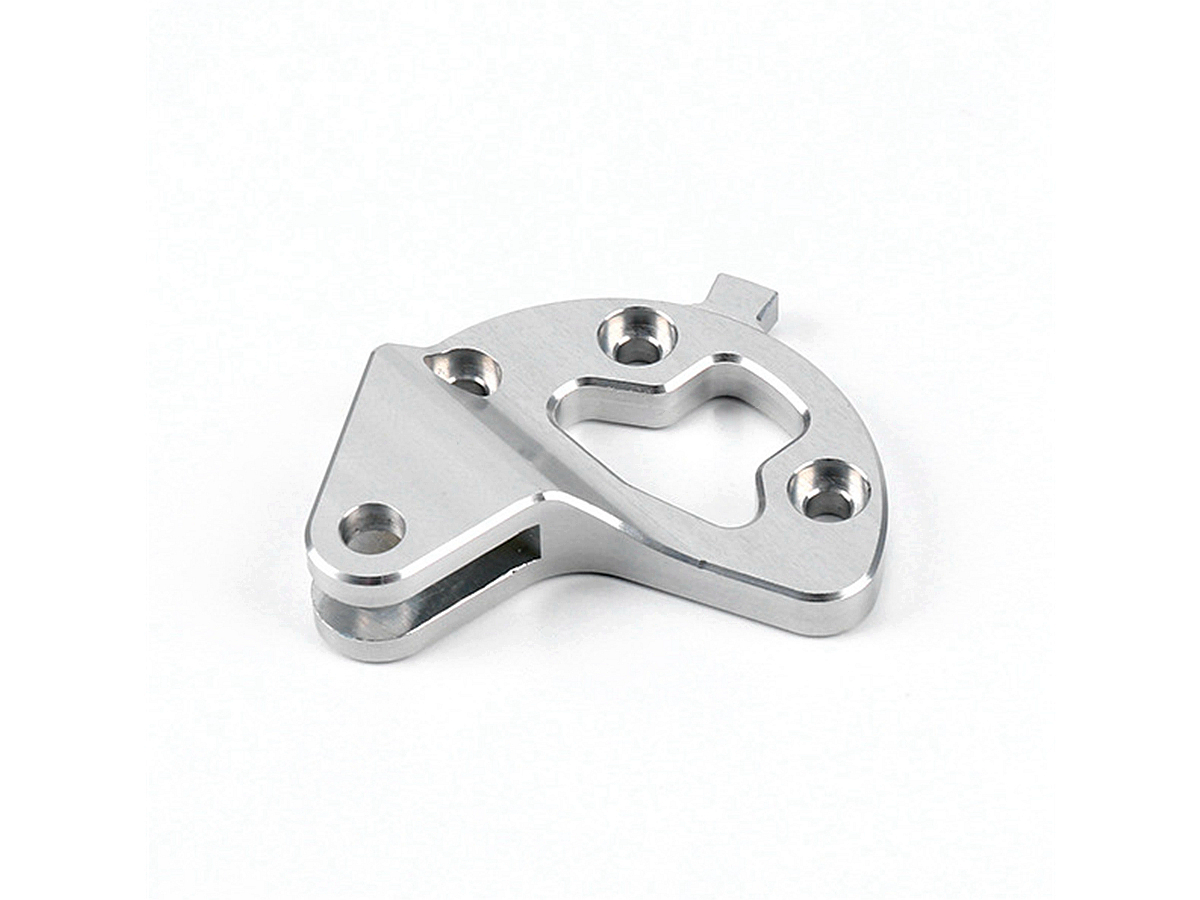CNC Rapid Prototyping of Stainless Steel for Corrosion-Resistant Prototypes and Functional Parts
Introduction
CNC rapid stainless steel prototyping gives manufacturers an efficient and precise method to create corrosion-resistant prototypes and fully functional parts. Stainless steel’s unique strength, durability, and superior corrosion resistance make it highly suitable for demanding industries such as medical devices, aerospace, automotive, and marine applications. Advanced CNC machining techniques, including CNC Milling Service and Multi-Axis Machining Service, ensure rapid, high-precision fabrication within tight tolerances (±0.005 mm).
Leveraging CNC rapid prototyping with stainless steel streamlines the development process, allowing rapid validation, testing, and refinement of corrosion-resistant designs before proceeding to mass production.
Stainless Steel Properties
Stainless Steel Comparison
Alloy Type | Tensile Strength (MPa) | Yield Strength (MPa) | Hardness (HRC) | Density (g/cm³) | Applications | Advantages |
|---|---|---|---|---|---|---|
520–720 | 210–250 | ≤20 | 7.93 | Food-grade components, hardware | Excellent corrosion resistance, weldability | |
530–750 | 240–290 | ≤25 | 7.98 | Marine fittings, medical equipment | Superior corrosion resistance, high strength | |
480–620 | 170–220 | ≤25 | 7.98 | Biomedical implants, chemical equipment | Exceptional corrosion resistance, biocompatibility | |
1100–1300 | 1000–1200 | 35–44 | 7.75 | Aerospace, automotive parts | High strength, excellent hardness |
Choosing the Right Stainless Steel
Choosing the correct stainless steel alloy for CNC rapid prototyping involves considering corrosion resistance, mechanical strength, biocompatibility, and application requirements:
SUS304: Suitable for general-purpose prototypes requiring excellent corrosion resistance, good machinability, and weldability, commonly used in food processing and hardware applications.
SUS316: Ideal for marine, chemical, and medical device applications due to enhanced corrosion resistance, high tensile strength (up to 750 MPa), and durability in chloride-rich environments.
SUS316L: Preferred for biomedical implants and sensitive chemical equipment due to superior biocompatibility, corrosion resistance, and weldability.
17-4PH (SUS630): Recommended for demanding aerospace, automotive, and industrial applications requiring high mechanical strength (up to 1300 MPa tensile) and hardness (35–44 HRC).
CNC Processes for Stainless Steel
CNC Process Comparison
CNC Machining Process | Accuracy (mm) | Surface Finish (Ra µm) | Typical Uses | Advantages |
|---|---|---|---|---|
±0.005 | 0.4–1.6 | Medical device housings, valve components | Versatile shaping, high accuracy | |
±0.005 | 0.4–1.6 | Shafts, fittings, precision components | High efficiency, excellent dimensional consistency | |
±0.01 | 0.8–3.2 | Precise holes, threaded inserts | Rapid, accurate hole-making | |
±0.003 | 0.2–1.0 | Complex geometries, aerospace prototypes | Exceptional precision, intricate detailing |
Selecting the Best CNC Method
Selecting the appropriate CNC prototyping method depends on design complexity, required tolerances, surface finish, and production efficiency:
CNC Milling: Best suited for creating precise, complex parts requiring tight tolerances (±0.005 mm) and excellent surface quality.
CNC Turning: Ideal for precise cylindrical components, ensuring consistent dimensional accuracy and high-quality finishes.
CNC Drilling: Recommended for efficient hole creation (±0.01 mm) and accurate threading, critical for precision assemblies.
Multi-Axis Machining: Essential for intricate aerospace and automotive prototypes, offering superior accuracy (±0.003 mm) and detailed geometries.
Surface Treatments for Stainless Steel
Surface Treatment Comparison
Treatment Method | Surface Roughness (Ra µm) | Corrosion Resistance | Max Operating Temp (°C) | Applications | Key Features |
|---|---|---|---|---|---|
≤1.0 | Excellent (ASTM A967) | 250 | Medical, aerospace, marine parts | Removes impurities, maximizes corrosion resistance | |
≤0.4 | Superior (ASTM B912) | 200 | Biomedical implants, precision valves | Ultra-smooth finish, enhanced corrosion resistance | |
≤0.8 | Excellent (ASTM B571) | 450 | Automotive, precision tooling | Wear-resistant, decorative surface | |
≤1.0 | Moderate (MIL-DTL-13924) | 150 | Industrial, tooling, hardware | Aesthetic appeal, moderate corrosion protection |
Choosing Surface Treatments
Proper surface treatments significantly enhance corrosion resistance, aesthetics, and durability:
Passivation: Ideal for medical, aerospace, and marine components, meeting ASTM A967 standards for excellent corrosion resistance.
Electropolishing: Optimal for biomedical implants, achieving an ultra-smooth finish (Ra ≤0.4 µm, ASTM B912).
PVD Coatings: Preferred for automotive and tooling parts, providing excellent wear resistance (ASTM B571).
Black Oxide Coating: Suitable for industrial components offering moderate corrosion protection (MIL-DTL-13924).
Stainless Steel Prototyping Methods
Effective prototyping methods include:
CNC Machining Prototyping: Ideal for precise dimensional tolerances and high-quality prototypes.
Stainless Steel 3D Printing: Excellent for complex geometries, beneficial for medical and aerospace applications.
Rapid Molding Prototyping: Efficient for economical validation before scaling production.
Quality Assurance Standards
Dimensional Inspection: ±0.002 mm (ISO 10360-2).
Material Verification: ASTM A240 standards.
Surface Finish Assessment: ISO 4287 standards.
Corrosion Testing: ASTM B117 Salt Spray (48–96 hours).
Mechanical Testing: ASTM E8.
Visual Inspection: ISO 2768.
ISO 9001 Quality Management compliance.
Key Applications
Medical Devices: Surgical instruments, implants, precision parts.
Aerospace: Structural components, connectors, fittings.
Automotive: Exhaust systems, fuel injectors, sensors.
Marine: Propellers, fittings, valves.
Related FAQs:
Why choose stainless steel for CNC rapid prototyping?
What CNC methods are best suited for stainless steel parts?
How do surface treatments enhance stainless steel prototypes?
Which quality standards apply to stainless steel CNC prototyping?
What industries benefit from stainless steel rapid prototyping?

